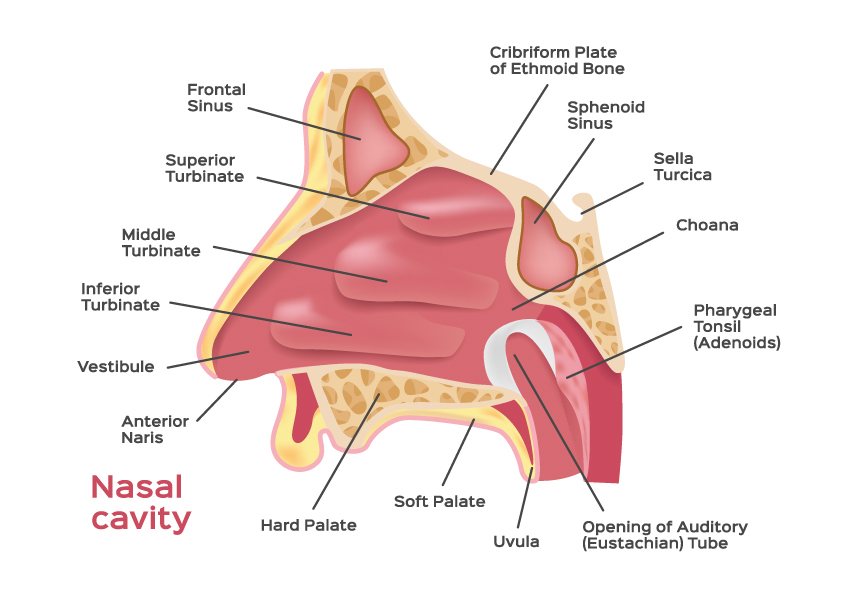Often performed in conjunction with septoplasty, reduction of the inferior nasal turbinates is another procedure designed to improve nasal airflow. Emanating from the cheek bones on the lateral aspect of the nasal passages, the inferior turbinates run essentially the entire length of the nasal cavity. Rich in capillary blood vessels and mucous-producing glands, the inferior turbinates play a very important role in a person’s sensation of air flowing through his or her nose. Overly aggressive removal of turbinate tissue during surgery can lead to a dreaded complication known as Empty Nose Syndrome, where the nose is widely open but the person feels terribly congested because he or she cannot sense air flowing through the nasal passage. Please see Dr. Karanfilov’s detailed information on the latest advances in treatment of Empty Nose Syndrome here.
In order to provide symptom relief while minimizing surgical blood loss and post-operative complications, Dr. Karanfilov uses advanced surgical technology to perform mucous membrane preserving turbinate reduction surgery. Depending on the individual patient’s characteristics, this surgery may involve radiofrequency ablation or submucosal microdebridement.
For many adults, ear tube placement can be performed in the office setting under local anesthesia. Typically, Dr. Karanfilov is able to apply a liquid anesthetic called phenol directly to the eardrum surface, making this a reasonably comfortable procedure that is similar to getting a shot at your primary doctor’s office. For some adults requiring long-lasting tubes or with more challenging ear anatomy, Dr. Karanfilov may still recommend performing the operation under anesthesia in the OR setting to maximize your comfort and safety.



